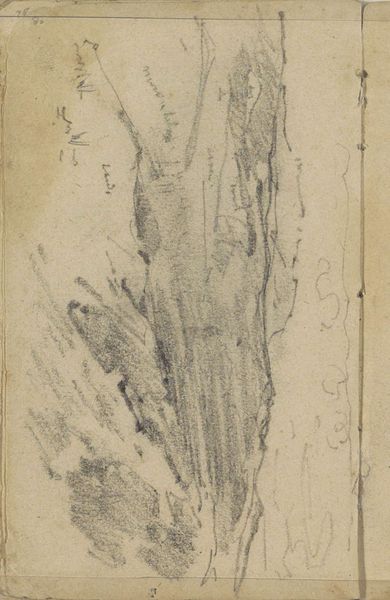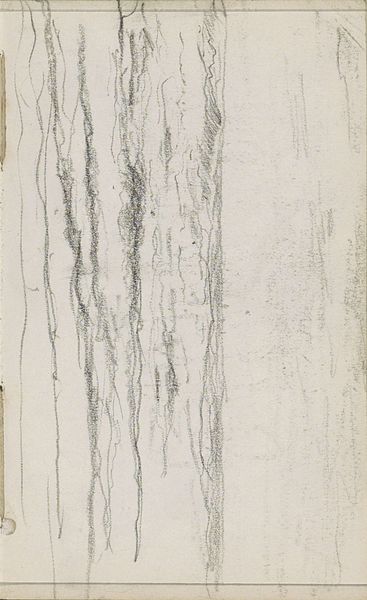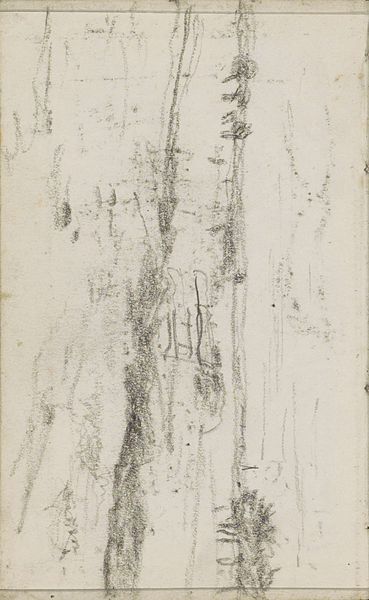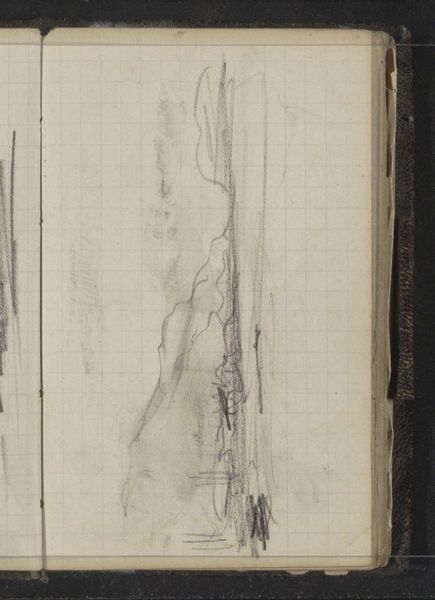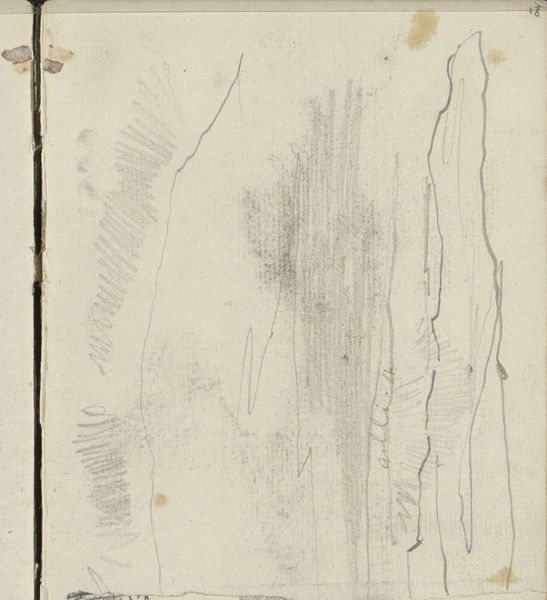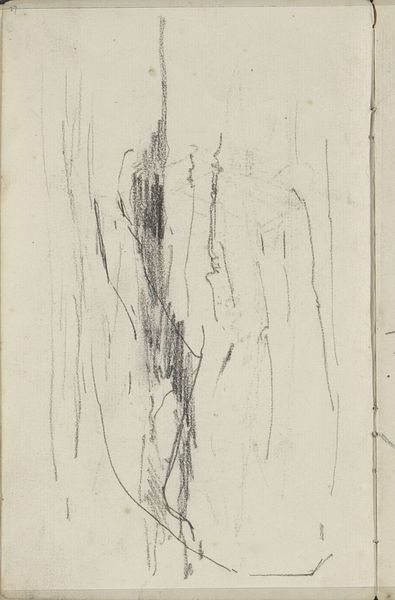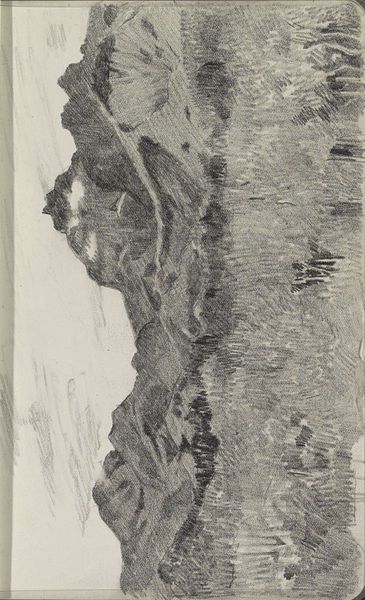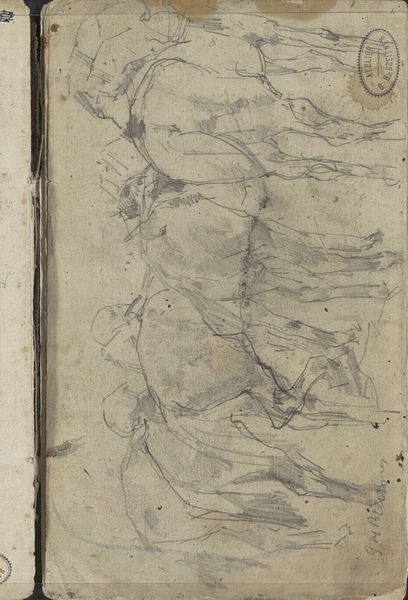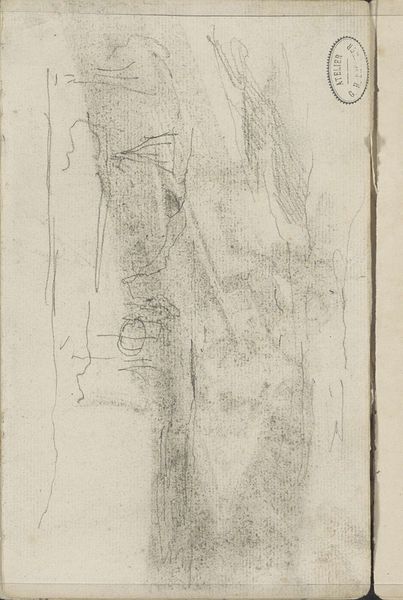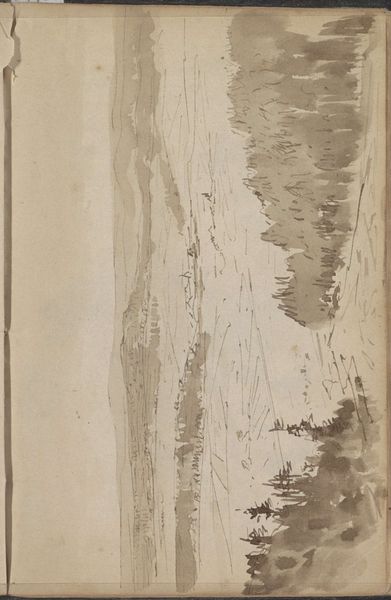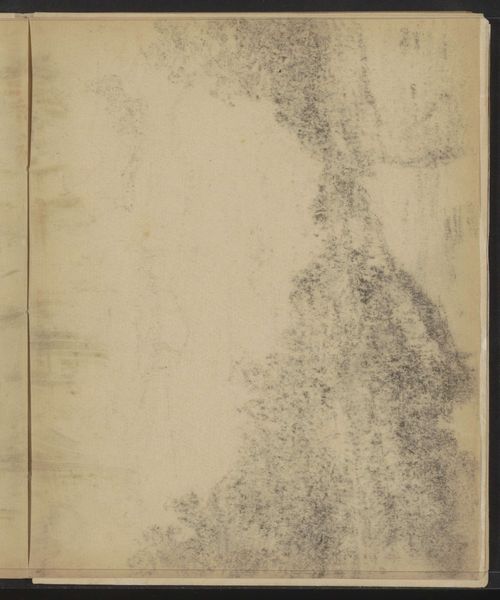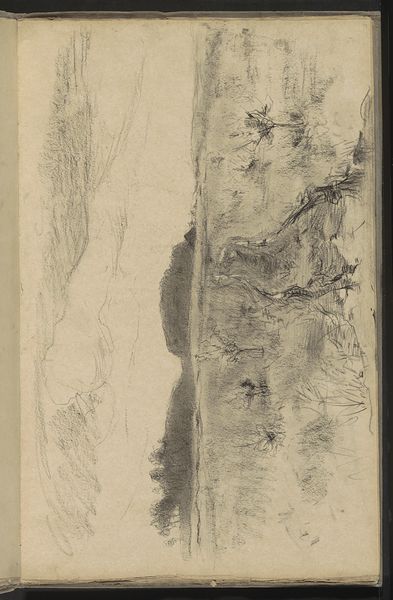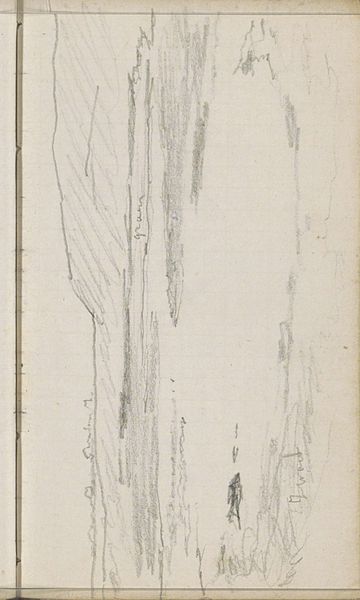
drawing, pencil
#
drawing
#
impressionism
#
pencil sketch
#
landscape
#
pencil
#
sketchbook drawing
Copyright: Rijks Museum: Open Domain
Editor: This is "Dune Landscape," a pencil drawing by George Hendrik Breitner from around 1880. The texture looks almost like rain cascading down, obscuring something solid underneath. What symbols might be hiding here? Curator: It’s compelling, isn’t it? Think of the verticality – those stark, almost oppressive lines. What feelings do they evoke? Is it the power of nature bearing down on something? Consider, too, that linear form resembling strands. Editor: Almost like hair, or a weeping willow? The way the shading clumps near the top does remind me of hair. Curator: Yes, precisely! And hair, throughout art history, has symbolized everything from grief and mourning to strength and even unbridled sexuality. Does that added meaning affect how we interpret this sketch? Does Breitner tap into a pre-existing emotional current linked to the visual representation? Editor: I didn't expect a simple landscape to hold so many layers of meaning! Curator: Indeed. The landscape, particularly the Romantic vision of nature, often becomes a mirror reflecting interiority. It carries projections of our deepest selves. The symbols aren't just present; they call to be interpreted within both individual and collective psyche. Editor: I now look at this as not only a drawing of the landscape but an emotive response. Thanks for that insight. Curator: My pleasure. The dialogue between what we see and what we *feel* is key, here. This helps uncover how our personal cultural and artistic heritages shape how we experience art.
Comments
No comments
Be the first to comment and join the conversation on the ultimate creative platform.
